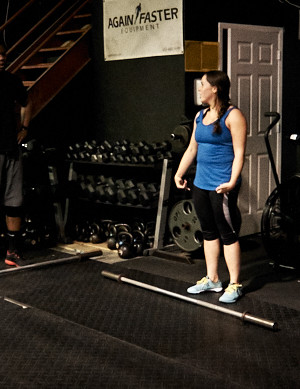Training the Energy Systems
By: Jenessa Connor
Ask most CrossFit athletes what they like about CrossFit, and you’re guaranteed to hear something about the variety an average WOD delivers – only when the clock strikes 8 p.m. and Wodify updates do you know if the next day’s workout will include 20-second sprints on the assault bike or a steady one-mile run.
While all the mixed modalities, durations, intensity levels, and rest periods keep workouts fun and interesting, there are bigger reasons why Coach Iz’s programming is constantly varied. One of these reasons has to do with the human body’s energy systems.
Exercise physiology is incredibly complex, but understanding a few basic principles about energy systems can help you make sense of why we do what we do. In very, very simplified terms:
The body requires the molecule adenosine triphosphate (ATP) for energy. There are three metabolic pathways, or systems, for generating ATP:
- The ATP-PC system (the “PC” stands for phosphocreatine, another molecule)
- The glycolytic system
- The oxidative system (sometimes referred to as the “aerobic system”)
While we are always using all three systems, we rely more on certain systems for different types of activities. So, it makes sense to train each system in order to become more efficient and well-rounded athletes.
The ATP-PC system supplies energy for short-duration, high-intensity, non-sustainable work – nothing longer than 15-20 seconds. When we crank out 20-second sprints on the assault bike and need two to three minutes to recover, we’re primarily using the ATP-PC system.
The glycolytic system is primarily responsible for work that spans 30 to 50 seconds. When we work on a 10-rep max for a deadlift, we’re mostly using the glycolytic system. This kind of work is very difficult, but not as hard as an all-out sprint.
As work approaches the two-minute mark, we begin to use less of the ATP-PC and glycolytic systems, and rely more on the oxidative system, which requires oxygen. A mile-long run or a workout like Murph is all about the oxidative system. When we’re using the oxidative system, we’re working at a challenging but sustainable pace.
Here are a few tips for getting the most out of training each of the energy systems:
- Pay attention to the rate of perceived exertion (RPE). If, for example, a portion of a WOD is supposed to be performed for two minutes at a maximum effort, make sure you’re working so hard that you’re unable to sustain your pace for beyond two minutes. Same thing goes for workouts performed at a sustainable pace; don’t turn a 65% run into an all-out sprint.
- Observe prescribed rest periods. When it comes to targeting energy systems, these are just as important.
- Don’t cherry pick. You may prefer sprints over long periods of time on the rower, but if you never show up for workouts that train the oxidative system, your endurance won’t improve.
Got questions? Leave them in the comments or hit up Coach Iz for more information!






Leave a Reply
Want to join the discussion?Feel free to contribute!